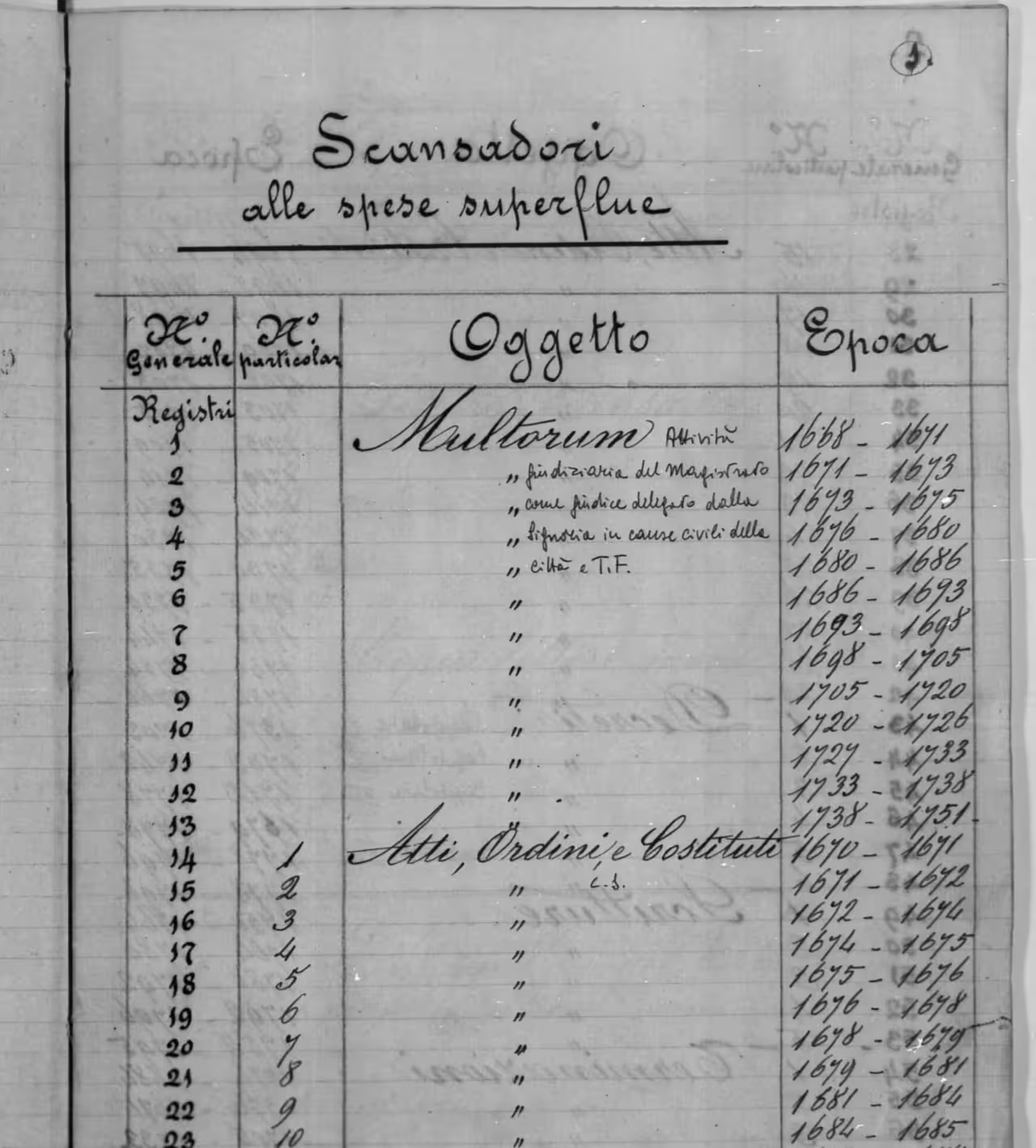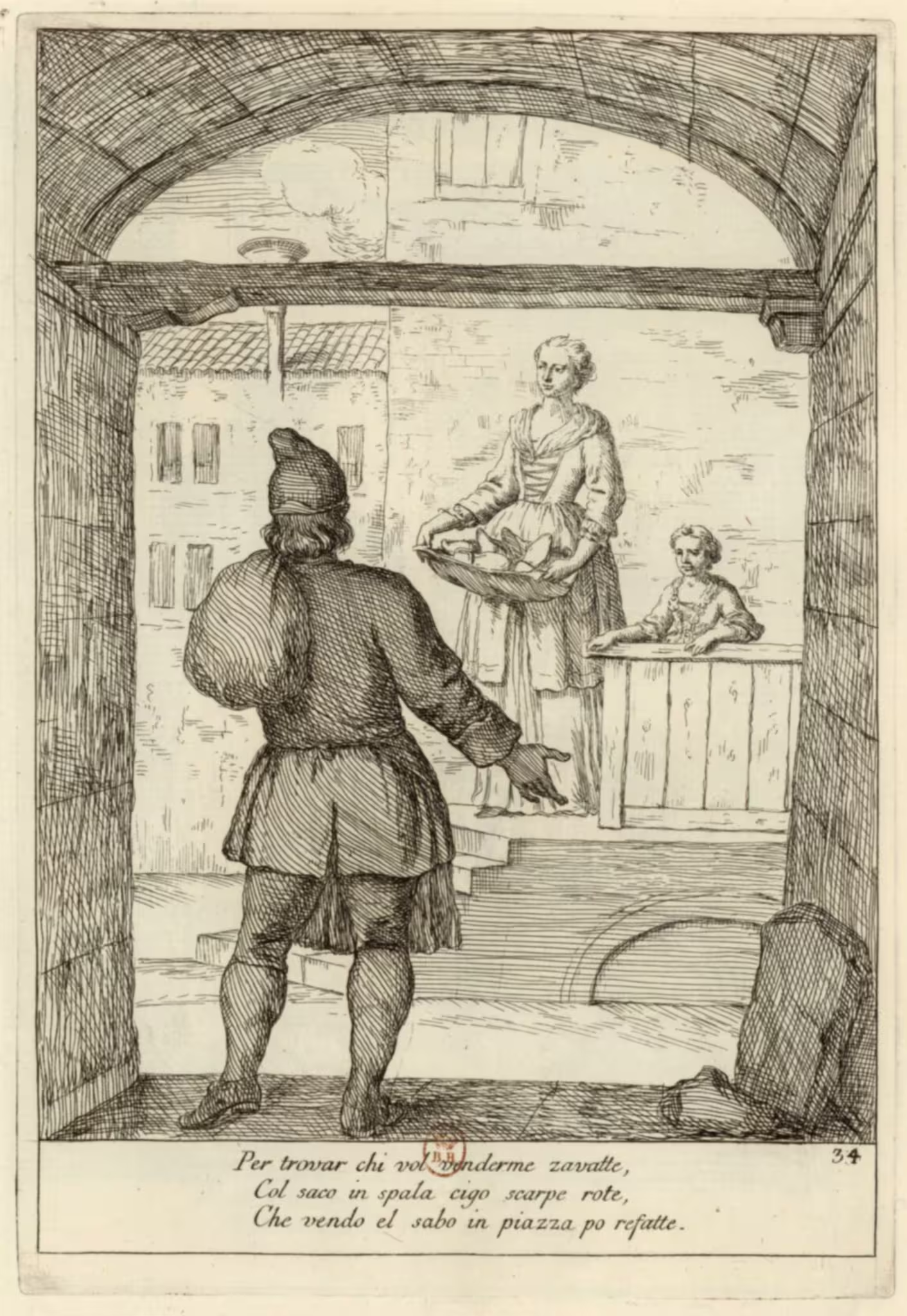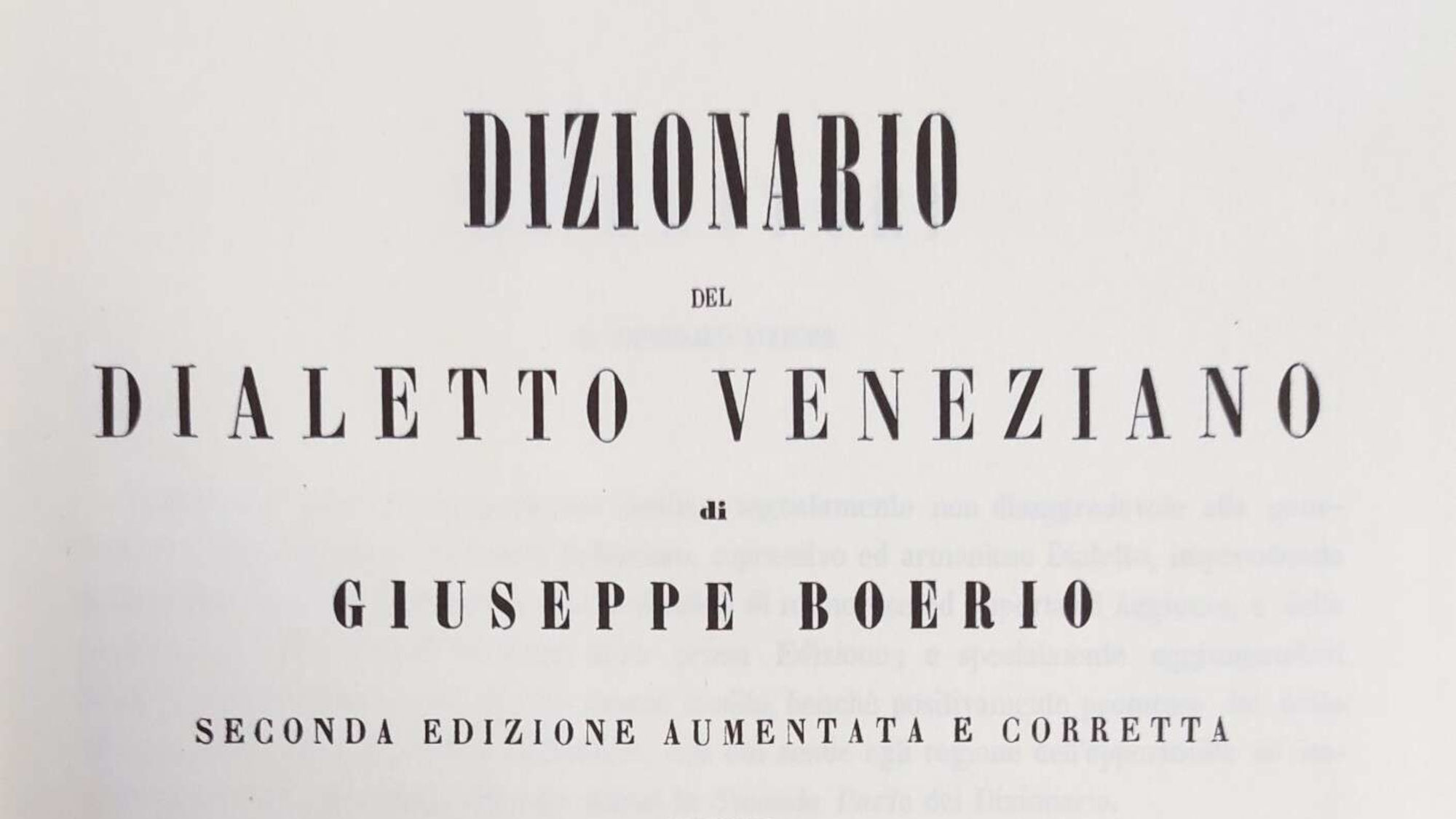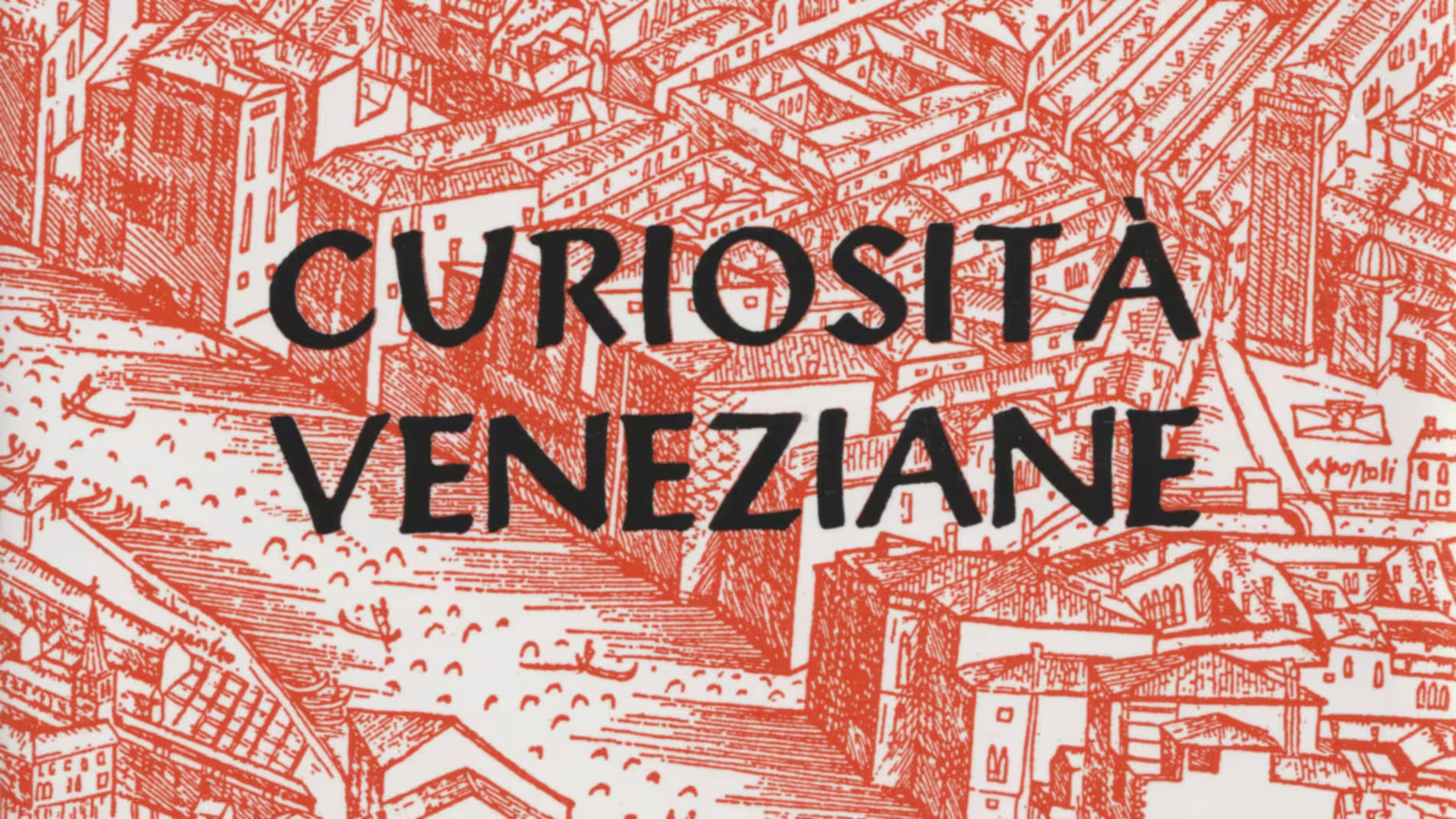The plague epidemic in Venice in 1575 left many public offices vacant. The plague didn’t spare the rich or the powerful, and the holders of offices of state died of the plague too. The Venetian senate reacted by creating a new office of the Provveditori e Revisori sopra la scansazione e regolazione delle spese superflue — literally the “Superintendents and regulators for the avoidance and regulation of superfluous expenses.”

The full title was rather long, so usually the title was just the Scansadori alle spese superflue — the Avoiders of superfluous expenses — or just the Scansadori.
The office of the Scansadori alle spese superflue consisted of three patricians, appointed by the Pregadi — the Venetian senate — from their midst.
The Scansadori controlled the functioning of all the offices of the state, suggested the suppression of useless offices, the regulation of the necessary offices, and the elimination of superfluous expenses.
Ad hoc administration
The Venetian state existed for over a thousand years without any constitution. Consequently, the Maggior Consiglio — the highest authority of the Venetian republic — and the Pregadi — the Venetian senate — often created offices and positions on an ad hoc basis.
The Senate was a far more nimble organisation than the Maggior Consiglio, which at times had around 2500 members. The Pregadi initially had sixty senators, later enlarged by twenty, then forty and finally sixty Zonti (adjuncts). However, the tendency was to include more and more magistrates from important offices in the Pregadi, so in later times the Senate had well over 200 members.
Confronted with some kind of problem or emergency, the Pregadi or the Maggior Consiglio therefore often appointed a group of usually three members to take care of it. The terms in office were generally short. Six months or twelve months were quite common.
Often the Pregadi or the Maggior Consiglio stopped appointing the magistrates, but at other times it developed into a permanent magistracy. This happened with the Scansadori, which existed at times between 1546 and 1576, but not as a permanent office.
Likewise, the Magistrato alla Sanità — in charge of the response of the Republic of Venice to the recurrent plague emergencies in the 1400s — were ad hoc appointments of a commission of three patricians whenever the plague arrived. The Magistrato alla Sanità became permanent in 1485, as the plague evidently didn’t disappear.
The purpose of the Scansadori
The initial reason for making the Scansadori permanent was the number of unoccupied positions due to the plague. In a situation where noblemen suitable for the positions were few, getting rid of useless offices was one way of tackling the problem. If some offices could be disbanded as superfluous expenses, fewer noblemen were needed overall.
The plague passed, but the Scansadori served nonetheless.
The general tendency was always to create new magistracies for this and that. Once an office was there, it became part of the annual partitioning of positions, which were a regular part of the culture of government in Venice. This was how the different factions of the nobility divided power and status between them.
The Scansadori served as a countermeasure to this tendency. While having more positions of status and power available for partitioning was a positive, the associated costs — the superfluous expenses — were not.
The image above is an index page of one of the registries of the Scansadori alle spese superflue, from the Archivio di Stato di Venezia.
Related articles
- The Republic of Venice
- State institutions of the Republic of Venice
- Chronology of major Venetian state institutions
- The Venetian constitution
- The Consiglio Maggiore
- Maggior Consiglio — ASV Indice
- Senato — ASV Indice
- The ASV Indice by Andrea da Mosto
Bibliography
Da Mosto, Andrea. L'Archivio di Stato di Venezia : indice generale, storico, descrittivo ed analitico in Bibliothèque des Annales Institutorum, 5. Roma : Biblioteca d'arte, 1937.
Mutinelli, Fabio. Lessico veneto che contiene l'antica fraseologia volgare e forense … / compilato per agevolare la lettura della storia dell'antica Repubblica veneta e lo studio de'documenti a lei relativi. Venezia : co' tipi di Giambatista Andreola, 1851.





Leave a Reply